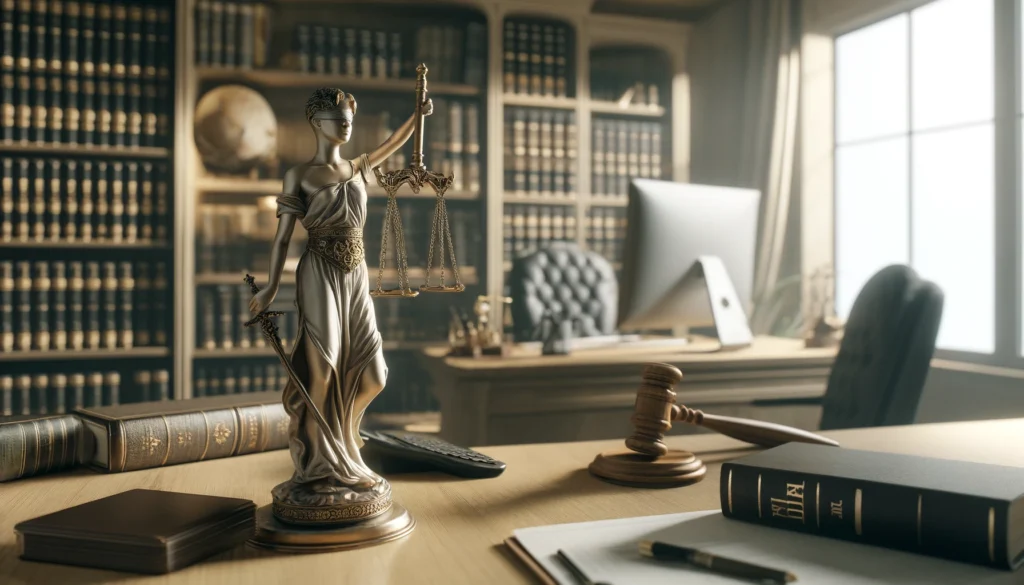
Elevating the Paralegal’s Arsenal: An Introduction to AI in Legal Workflows
In today’s fast-paced legal environment, leveraging technology is no longer optional—it’s essential. AI tools like ChatGPT are rapidly transforming the legal landscape by augmenting human ingenuity with powerful machine learning capabilities. For paralegals, the rise of AI presents a unique opportunity to enhance efficiency, accuracy, and overall effectiveness in legal workflows. This transformative potential is particularly evident in tasks such as preparing Statements of Defense, where the precision and speed of AI can significantly streamline the drafting process.
Foundations and Frameworks: Getting Started with ChatGPT and LLMs
Before diving into advanced AI-powered techniques, it’s crucial to first understand the basics of ChatGPT and other large language models (LLMs). ChatGPT is a product of OpenAI, designed to generate human-like text based on the input it receives. This versatility makes it an invaluable tool for various legal drafting tasks.
Overview of ChatGPT and Other LLMs:
– LLMs are trained on vast datasets, allowing them to generate text, answer questions, and even draft complex legal documents with impressive fluency.
– Besides ChatGPT, other notable LLMs include GPT-3, Microsoft’s Turing-NLG, and Google’s BERT.
Basic Setup and Account Creation:
– Creating an account on the OpenAI platform is straightforward. After registration, you’ll have access to a user-friendly dashboard where you can begin interacting with ChatGPT.
– Familiarize yourself with the interface and explore the available customization options to make the tool work best for your specific legal needs.
Privacy and Confidentiality Considerations:
– Always ensure that the data you input into any AI system adheres to relevant privacy laws and ethical guidelines.
– Anonymize sensitive client information and use encrypted channels to safeguard the confidentiality of your legal documents.
As you set up and explore these tools, the vital next step is crafting inputs that yield precise and useful outputs.
Also read:
Crafting the Perfect Defense: Key Prompts and Techniques
Effective interaction with AI hinges on how well you structure your inputs or prompts. In the legal context, precision, and clarity are paramount.
Structuring Effective Prompts for Legal Contexts:
– Begin with a clear, concise introduction of what you need. For example, “Draft a Statement of Defense for a civil lawsuit involving allegations of breach of contract.”
Leveraging Context and Specificity in Queries:
– Your prompts should provide enough context for ChatGPT to generate relevant content. Including case-specific details can greatly enhance the quality of the output.
– Example: “Draft a Statement of Defense for John Doe in a lawsuit claiming breach of contract where Doe is alleged to have failed to deliver software as per the agreement dated January 15, 2023.”
Example Prompts for Drafting Statements of Defense:
– “Provide a statement denying the allegations of negligence in a personal injury case.”
– “Draft a defense argument for a client accused of violating a non-compete clause.”
– “Create a general denial and affirmative defenses for a breach of contract lawsuit.”
These nuanced prompts enable ChatGPT to produce more accurate and targeted content. Now, let’s delve deeper into advanced techniques for refining these outputs.
Also read:
Nuanced Precision: Advanced Prompting Strategies
Complex legal matters require more than straightforward queries. Multi-step and iterative prompting can lead to comprehensive, high-quality results.
Using Multi-Step Queries for Comprehensive Results:
– Break down complex tasks into sequential prompts. Start broad and then refine: “Outline key points for a defense against breach of contract,” followed by “Expand on point X with relevant case law.”
Maximizing Clarity and Conciseness:
– Be explicit about the need for clarity: “Summarize the defense argument for breach of contract in under 200 words with clear headings.”
– Encourage concise responses while maintaining legal rigor and completeness.
Techniques for Refining and Revising AI Outputs:
– Encourage iterative refinement: “Revise the drafted Statement of Defense to include a stronger argument for lack of consideration.”
– Emphasize thoroughness in review: “Double-check the defense draft for legal inconsistencies or weak points.”
As mastery of these techniques develops, you can further optimize your workflow by automating repetitive tasks.
Also read:
Enhancing Efficiency: Automation and Time-Saving Tips
Beyond drafting, AI can streamline numerous routine tasks, significantly boosting productivity and accuracy.
Repetitive Task Automation:
– Tasks such as initial document reviews, data extraction from legal texts, and summarization can be automated with AI.
– Example: “Summarize this 30-page legal contract in 5 bullet points focusing on key obligations and liabilities.”
Collaborative Workflows Between Paralegals and AI:
– Utilize AI to generate drafts and then refine collaboratively. Begin with a prompt like, “Create a first draft of a client letter addressing breach of contract concerns.”
– Follow with manual revisions to ensure compliance with specific legal standards and personalized client interactions.
Integrating AI Suggestions into Final Documents:
– AI suggestions should be a starting point. Review and edit the AI-generated content thoroughly before finalizing any legal document.
– Incorporate human expertise to nuance the AI drafts: “Refine the drafted defense to reflect the unique relational dynamics of the case.”
While AI can significantly enhance efficiency, maintaining ethical standards is crucial in its application.
Also read:
The Ethical Compass: Ensuring Compliance and Integrity
Adopting AI in legal workflows necessitates a balanced approach that respects ethical standards and professional integrity.
Ethical Considerations in AI Usage:
– Always ensure the AI-generated content is accurate and reflects the legal principles relevant to your jurisdiction.
– Regularly audit AI outputs for compliance with ethical guidelines.
Maintaining Legal Professional Standards:
– Paralegals must use AI as an aid, not a replacement, for professional legal judgment.
– Always attribute sources and ensure AI outputs are verified against authoritative legal texts.
Avoiding Pitfalls and Common Mistakes:
– Beware of over-reliance on AI for substantive legal interpretations.
– Ensure a thorough review process is in place to catch inaccuracies.
Staying attuned to these ethical guidelines is essential as you explore future trends in AI and legal tech.
Also read:
Future Horizons: Emerging Trends and Ongoing Learning
The landscape of AI and legal technology is continuously evolving, offering new tools and improved capabilities.
New Developments in AI and Legal Tech:
– Keep an eye on advancements such as real-time legal analytics, enhanced natural language processing, and more sophisticated legal research tools.
Staying Updated and Continuous Professional Development:
– Regularly participate in webinars, workshops, and professional courses focusing on the latest AI advancements in the legal field.
– Network with peers to share insights and best practices.
Adapting to these future trends will ensure that paralegals remain at the forefront of legal innovation.
Also read:
Conclusion: Transforming the Paralegal Role through AI
The integration of AI into legal workflows is revolutionizing the role of the paralegal. By mastering tools like ChatGPT, paralegals can achieve unprecedented levels of efficiency, accuracy, and productivity. This not only enhances individual performance but also elevates the entire legal team’s capability, paving the way for more effective legal practice. Embrace these AI tools as valuable allies in your legal arsenal, and watch as your role transforms in an increasingly tech-driven world.


